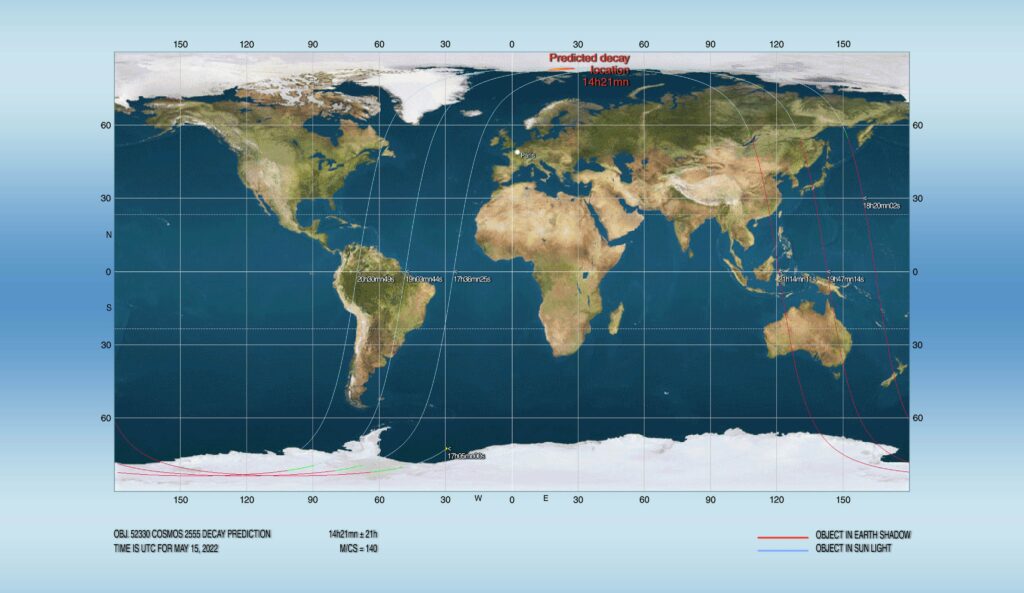The Russian military satellite Kosmos-2555 failed to carry out a maneuver to raise the altitude of its orbit. In the near future, the device will enter the Earth’s atmosphere and burn up.

Kosmos-2555 was launched on April 29 by the Angara-1.2 rocket from the Plesetsk cosmodrome. This was the first flight for this modification of the carrier since 2014. According to official reports, the launch was successful.
According to the NORAD tracking system, Kosmos-2555 was launched into orbit with a perigee height of 279 km, an apogee height of 294 km and an inclination of 96.5°. These parameters are similar to the orbital parameters of the Kosmos-2525 and Kosmos-2551 satellites launched in 2018 and 2021. It is believed that they represent a new generation of intelligence vehicles “EMKA”.
But while Kosmos-2525 worked for three years, Kosmos-2551 descended from orbit just 41 days after launch, failing to carry out a single maneuver (which, however, did not prevent Russia from calling its launch a success). Apparently, the same fate now awaits Cosmos-2555.
According to satellite spotters, after the launch, Kosmos-2555 performed only one small maneuver, insufficient to seriously change its orbital characteristics. As a result, the device began to rapidly lose altitude. As of May 15, the perigee of the Kosmos-2525 orbit has decreased to 222 km. Judging by the satellite’s inability to raise altitude, it either completely failed, or some kind of accident occurred on board. In any case, this means that in the near future, Cosmos-2555 will burn up in the earth’s atmosphere. According to various estimates, this will happen in the interval from a few days to several weeks.
Earlier we wrote about how Starlink resists Russia’s increasing attempts to interfere with its work.
According to https://www.russianspaceweb.com
Follow us on Twitter to get the most interesting space news in time
https://twitter.com/ust_magazine
